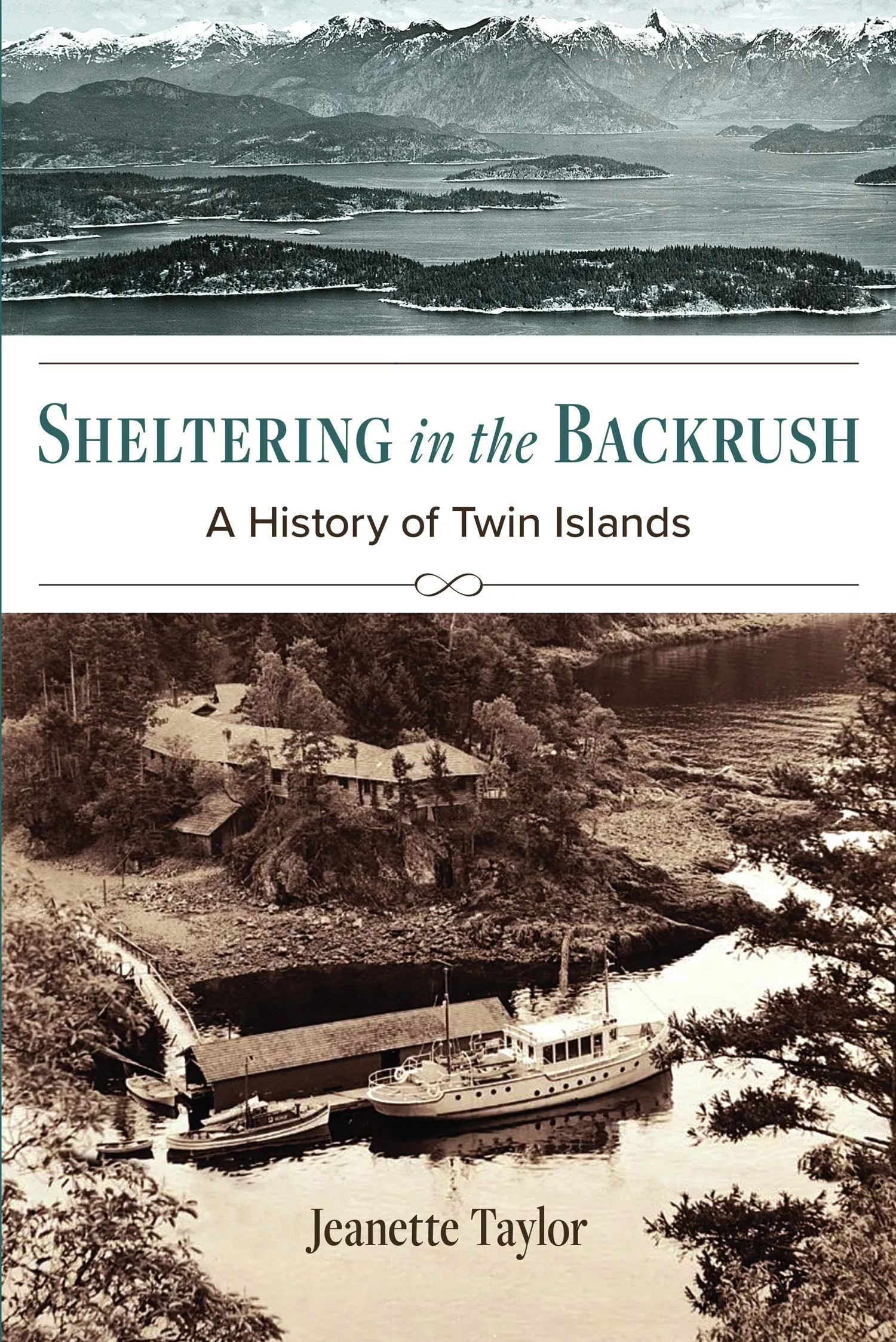Coastal historian Jeanette Taylor unveils the unique past of Twin Islands.
Twin Islands form part of the lacey fringe at the southern edge of the Discovery Islands archipelago, where it meets the north Salish Sea. This is the interface between wilderness and urban settlement. To the north, heavily treed slopes rise vertically from the sea and fast tides churn through the constricted passages of a maze of islands and inlets. Navigating these waters is a white-knuckle challenge many recreational boaters avoid, ending their travels to the east in Desolation Sound Marine Park. To the south, the topography relaxes into a more habitable environment of open waters, villages, towns and highways. Those who do find their way to Twin are richly rewarded by a beautiful and tranquil destination—with a fascinating past.
Discovery of a trove of sepia-toned pictures of Twin Islands from the late 1930s drew Jeanette Taylor to research and document the history of the islands. She found a live-wire cast of characters typical of remote places, including a one-legged sheep farmer; an aristocratic Irish priest who was the victim of an unsolved murder; American tycoons fleeing Japan on the cusp of World War II; German royalty; and an anonymous heiress who rescued the islands from logging.
Through it all, Taylor found a thread among Twin’s people, passed from one generation to the next—like an invisible torch handed over with the deed: a love of nature and the place. Illustrated with historical photos and engagingly written, Sheltering in the Back Rush is an important addition to Harbour Publishing’s catalogue of coastal BC history.











![Adidas Padel & Tennis (Picky) Ball Pick Up Tube [s] Adidas Padel & Tennis (Picky) Ball Pick Up Tube [s]](https://www.geraexplorer.shop/image/adidas-padel-amp-tennis-picky-ball-pick-up-tube-s_l9tEGG_300x.webp)



